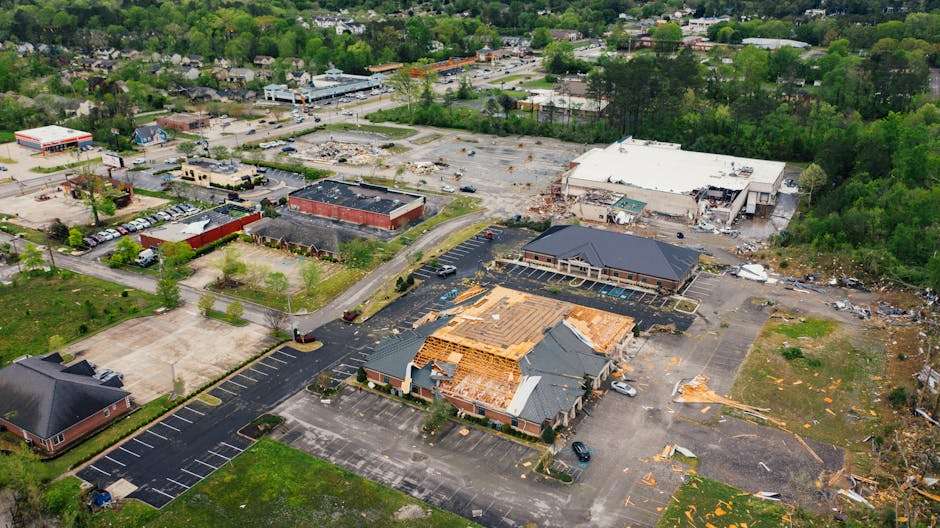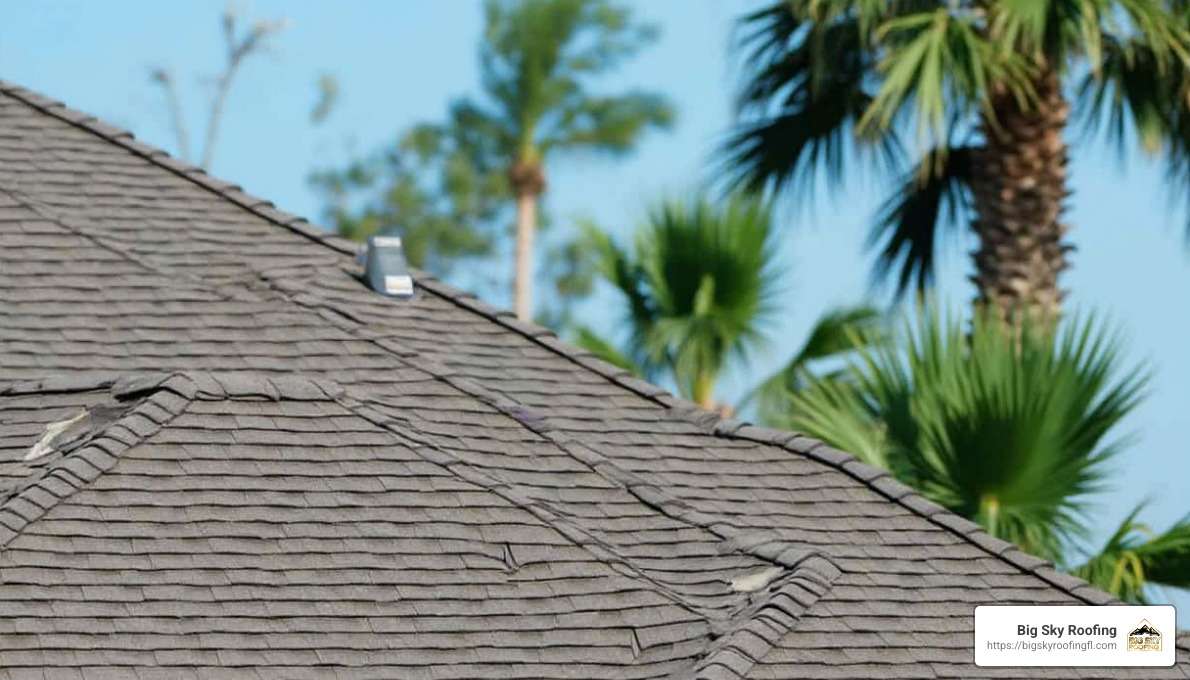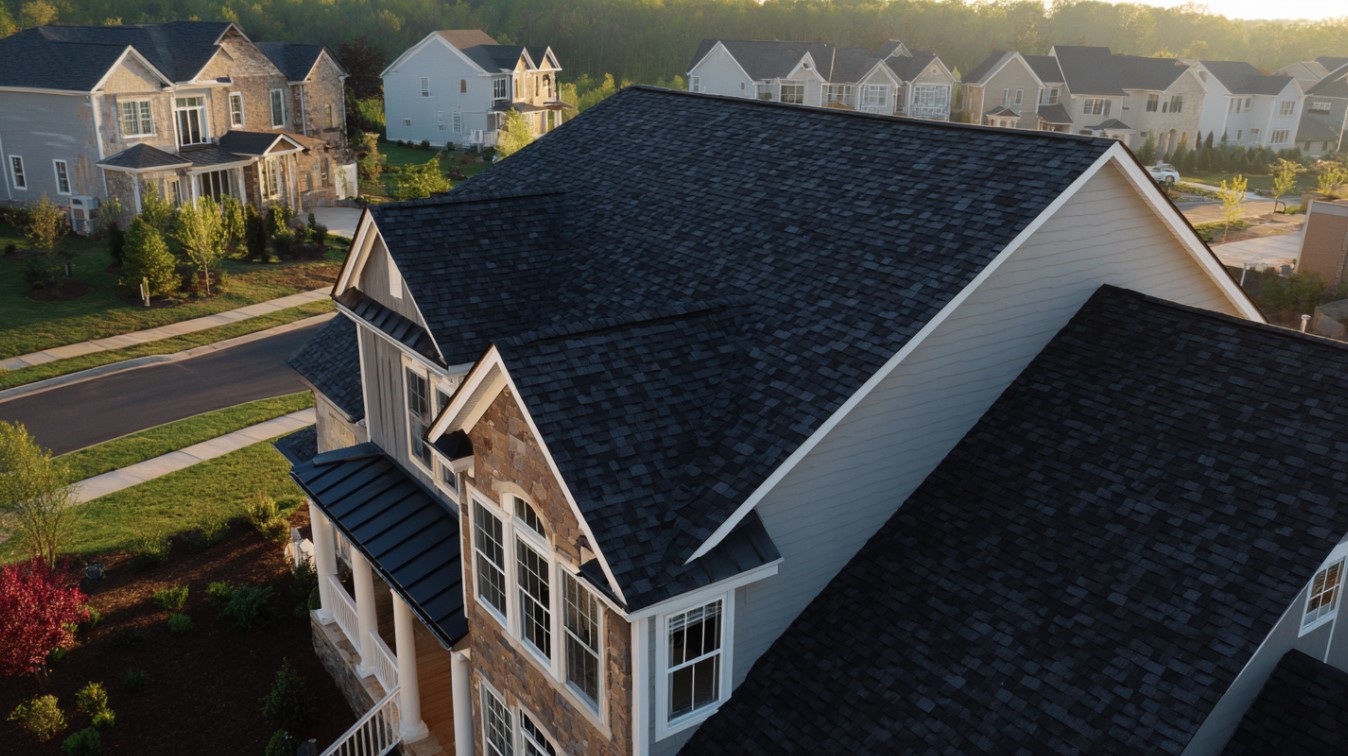Storm-Ready Roofs: The Art of Hurricane-Proof Design
•
Written By

When it comes to hurricane proof roof design, the right choices can make all the difference between weathering the storm and costly damages. Homeowners in Florida, especially in areas like Sumter County, Lake County, Citrus County, Hernando County, Orange County, and Marion County, are all too familiar with the havoc a hurricane can wreak.
To help your home withstand extreme weather, consider these key aspects:
- Strong Connections: Ensure the roof is secured tightly to the main structure. Metal straps and hurricane ties are essential.
- Optimal Roof Shape: Round or multi-sided roof designs like hexagonal or octagonal shapes resist high winds better.
- Durability of Materials: Choose materials like metal roofing or tiles that can stand up to intense wind and flying debris.
Extreme weather calls for extreme preparation. As weather events become more severe due to climate change, the design of your roof is crucial to the safety and integrity of your home. In the aftermath of a hurricane, you don’t want to be the homeowner using ropes to hold down what’s left of a poorly constructed roof.
Prepare wisely. A well-designed roof not only guards against hurricanes but also preserves the value and comfort of your home. You can depend on resilient construction to safeguard your family’s future and peace of mind.
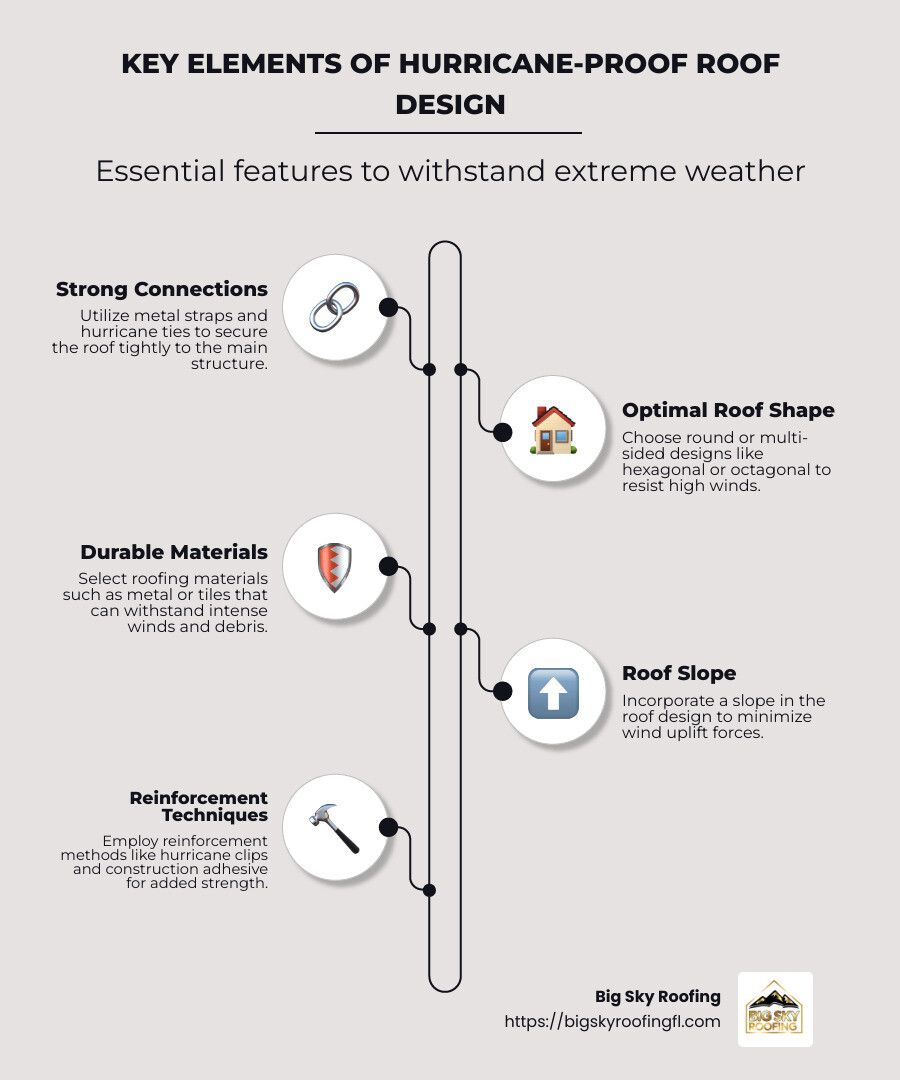

The Importance of Roof Shape in Hurricane-Proof Design
When it comes to hurricane-proof roof design, the shape of your roof plays a critical role in its ability to withstand high winds. The aerodynamics of your roof can mean the difference between minimal damage and a complete structural failure.
Why Aerodynamics Matter
In hurricane-prone areas like Sumter County, Lake County, Citrus County, Hernando County, Orange County, and Marion County, the wind pressures can be extreme. When these winds hit your home, the shape of your roof determines how well it deflects or absorbs the force. A well-designed roof will redirect wind, reducing the stress on the structure.
Hexagon and Octagon Shapes
Roofs with multiple sides, such as hexagon or octagon shapes, offer superior wind resistance. These designs are more aerodynamic, allowing wind to flow smoothly over the surface rather than catching on edges and creating lift. The multi-panel features of these shapes help distribute wind load evenly across the roof.
The Hip Roof Advantage
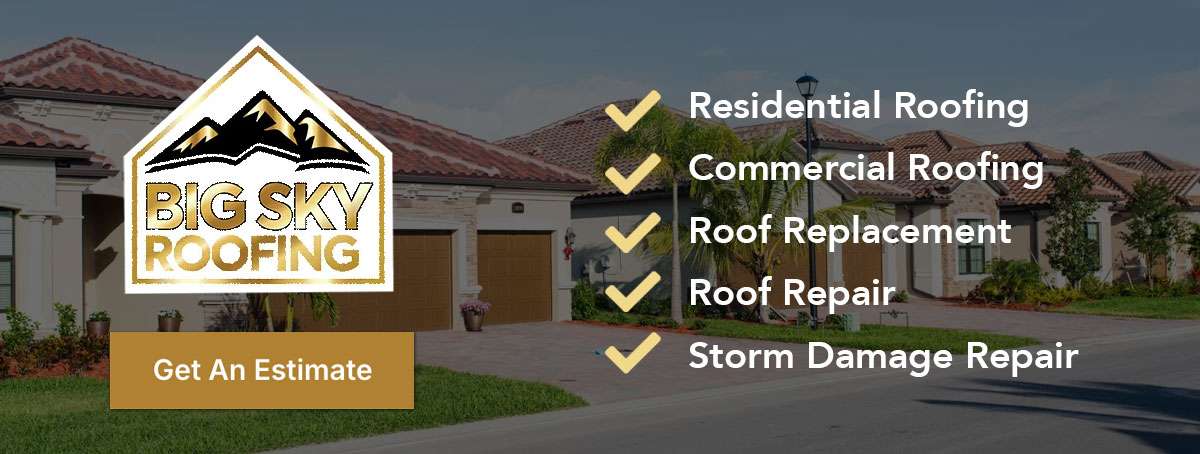
If a hexagon or octagon shape isn’t feasible, a hip roof is a great alternative. Hip roofs have four sloping sides, making them more aerodynamic than traditional gabled roofs. The slopes help deflect wind away, reducing the risk of damage. A hip roof with a 30-degree slope is particularly effective, combining traditional aesthetics with improved wind resistance.
Multi-Panel Features
Incorporating multi-panel features into your roof design can further improve its resistance to high winds. These features break up the surface area, reducing the wind load on any single point. This design strategy is crucial in areas like Central Florida, where hurricanes are a regular threat.
Choosing the right roof shape is not just about aesthetics; it’s about protecting your home and your family. By opting for a design that prioritizes aerodynamics, you can significantly increase your roof’s ability to withstand the harshest conditions.
Optimal Roofing Materials for Hurricane Resistance
Choosing the right roofing material is key to hurricane-proof roof design. In Central Florida areas like Sumter County, Lake County, Citrus County, Hernando County, Orange County, and Marion County, the materials you select can make all the difference when facing high winds and flying debris.
Metal Roofing
Metal roofing is at the top when it comes to hurricane resistance. Known for its durability, metal roofing can withstand high winds and flying debris better than most materials. It’s not just about strength; metal roofs are also fire-resistant, a bonus for storm-prone areas. Choose from options like galvanized steel or aluminum for a long-lasting solution. Metal roofs are designed to endure winds up to 160 mph, making them an excellent choice for hurricane-prone regions.
Clay and Concrete Tiles
Clay tiles offer a classic look and are quite durable, but they must be installed correctly to avoid damage during a storm. Concrete tiles are similar but heavier, offering more resilience against high winds. Both types require professional installation to ensure they’re securely fastened to the roof structure. They can last for decades with proper maintenance, providing both beauty and protection.
Slate Tiles
Slate tiles are another strong contender for hurricane resistance. They are incredibly durable and can last a lifetime. However, they are heavy and require a strong roof structure to support them. Slate tiles can withstand extreme weather but come with a higher price tag and installation complexity.
Asphalt Shingles
Asphalt shingles are a popular choice due to their affordability and ease of installation. While not as durable as metal or tile, they can still be effective if reinforced with hurricane-proof straps or clips. In hurricane areas, use nails instead of staples to secure asphalt shingles, as recommended by FEMA.
Wood Shakes
Wood shakes are surprisingly resilient to wind, capable of withstanding speeds up to 200 mph. However, they require complex design and maintenance, and they are susceptible to issues like rot and insect infestation. Modern wood shakes include sealants for added protection, but they remain a labor-intensive option.


When selecting roofing materials, consider both the immediate cost and long-term durability. The right material can significantly improve your home’s ability to withstand a hurricane, protecting both your property and your peace of mind.
Key Design Elements for Hurricane-Proof Roofs
When it comes to hurricane-proof roof design, certain elements are critical in making your roof as resilient as possible. Here’s what you need to know:
Roof Slope
The slope of your roof is more than just an aesthetic choice. Research from experts like Dr. Rima Taher at the New Jersey Institute of Technology has shown that a 30-degree slope is ideal for resisting high winds. This specific angle helps minimize wind uplift forces, which is crucial during a hurricane.
Pressure Strategy
Wind uplift can cause roofs to detach from homes, a common sight in hurricane aftermaths. A good pressure strategy involves minimizing eaves and overhangs to reduce uplift areas. Roofs with a central shaft connecting the ridge to the home’s interior help balance the pressure, making them less likely to be lifted off.
Egress Points
All points of egress, such as doors and windows, play a role in your roof’s ability to withstand a hurricane. Ensuring these are adequately protected and sealed prevents wind and rain from entering, which can lead to pressure imbalances and potential roof failure.
Roof Overhangs
While overhangs can provide shade, they are also vulnerable to wind uplift. Keeping them minimized to about 20 inches helps reduce the risk of them being torn off, which can compromise the entire roof structure.
Roof Connections
The connection between your roof and the main structure of your home is crucial. Using metal straps, also known as hurricane straps, ensures a strong bond. These straps should be securely fastened to the structural elements like beams or wall plates to withstand extreme wind forces.


By focusing on these key design elements, you can significantly improve the resilience of your roof, ensuring it stands strong against the fierce winds and rains of a hurricane. Next, we’ll explore reinforcement techniques that further improve your roof’s durability.
Reinforcement Techniques for Improved Roof Durability
To make your roof hurricane-ready, reinforcement is key. Here are some techniques that can improve your roof’s durability against fierce storm conditions.
Hurricane Clips and Roof Straps
Hurricane clips and roof straps are essential tools in securing your roof to the rest of your home. These metal connectors are designed to hold the roof structure tightly to the walls. They help distribute wind forces evenly, reducing the risk of the roof being lifted off during a storm. Make sure these are installed by professionals for maximum effectiveness.
Construction Adhesive
Using construction adhesive can further strengthen the bonds between roofing materials. This adhesive acts like a glue that holds everything together, providing an extra layer of security against strong winds. It’s a simple yet effective way to boost your roof’s resilience.
Roofing Cement
Roofing cement is another handy reinforcement material. It seals joints and cracks, preventing water from seeping in during heavy rains. Applying roofing cement to vulnerable areas can help avoid leaks and protect the interior of your home from water damage.
Roof Inspection
Regular roof inspections are crucial. A professional can identify weak spots, missing shingles, or other issues that might compromise your roof’s integrity during a hurricane. Scheduling inspections before hurricane season ensures your roof is in top condition when it matters most.
By incorporating these reinforcement techniques, you can significantly improve your roof’s ability to withstand the intense conditions of a hurricane. This proactive approach not only protects your home but also provides peace of mind when the storm clouds gather.
Frequently Asked Questions about Hurricane-Proof Roof Design
What is the best roof shape for hurricanes?
When it comes to hurricane-proof roof design, shape matters a lot. The best shapes are hexagon, octagon, and hip roofs. These shapes are more aerodynamic, which helps them resist high winds better than traditional gabled roofs.
- Hexagon and Octagon Roofs: These multi-panel designs reduce wind pressure, making them ideal for hurricane-prone areas. By breaking up wind flow, these shapes lower the risk of roof damage.
- Hip Roofs: A 4-slope hip roof is another great option. With slopes on all sides, hip roofs distribute wind pressure evenly, reducing the chances of the roof being lifted off.
Which roofing material offers the best wind resistance?
For top-notch wind resistance, metal roofing is your best bet. Metal roofs are highly durable and can withstand winds up to 160 mph. This makes them a smart choice for areas frequently hit by hurricanes, like Citrus County and Marion County.
- Wind Resistance: Metal roofing materials, such as aluminum and steel, are less likely to become dangerous projectiles during a storm. Plus, they often come with coatings that improve energy efficiency and durability.
How can I reinforce my existing roof for hurricane season?
Reinforcing your roof is crucial for hurricane preparedness. Here are some effective methods:
- Roof Inspection: Begin with a professional roof inspection. This helps identify any weak spots or damage that need fixing before hurricane season hits.
- Hurricane Clips: Install hurricane clips to secure your roof to the walls. These metal connectors help distribute wind forces evenly, reducing the risk of roof lift-off.
- Roofing Cement: Apply roofing cement to seal joints and cracks. This prevents water from seeping in during heavy rains, protecting your home’s interior.
By focusing on these key elements, you can significantly improve your roof’s durability against hurricanes. Taking these steps ensures your home is better prepared for the extreme weather conditions that can occur in places like Lake County and Hernando County.
Conclusion
At Big Sky Roofing, we understand the critical importance of having a hurricane-proof roof design, especially in Central Florida’s storm-prone areas, including Sumter County, Lake County, Citrus County, Hernando County, Orange County, and Marion County. Our commitment to superior craftsmanship ensures that your roof not only withstands extreme weather but also adds value and safety to your home.
With over 25 years of experience, our expert team specializes in the repair, restoration, and replacement of exterior products. We take pride in delivering exceptional customer service and high-quality roofing solutions custom to your specific needs.
Whether you’re considering a new metal roof for its wind resistance or reinforcing your existing roof with hurricane clips, we offer free estimates to help you make informed decisions. Our thorough inspections and attention to detail ensure that every project meets the highest standards of safety and durability.
For those looking to protect their homes with a resilient roof, Big Sky Roofing is your trusted partner. We are dedicated to providing you with peace of mind, knowing your home is safeguarded against the fiercest storms.
Ready to storm-proof your roof? Contact us today for a free estimate and experience our unparalleled service and expertise.

